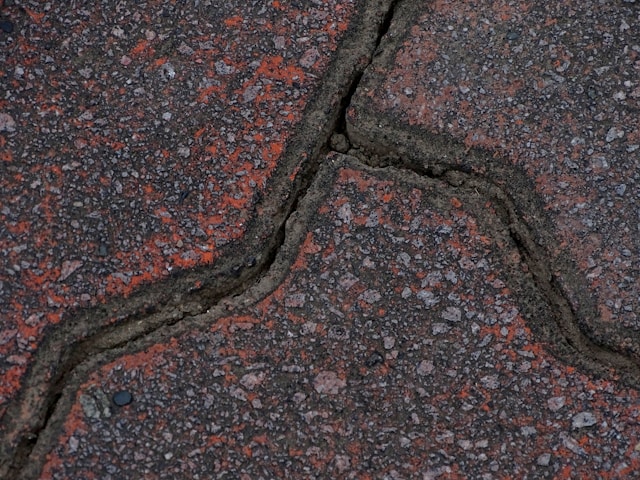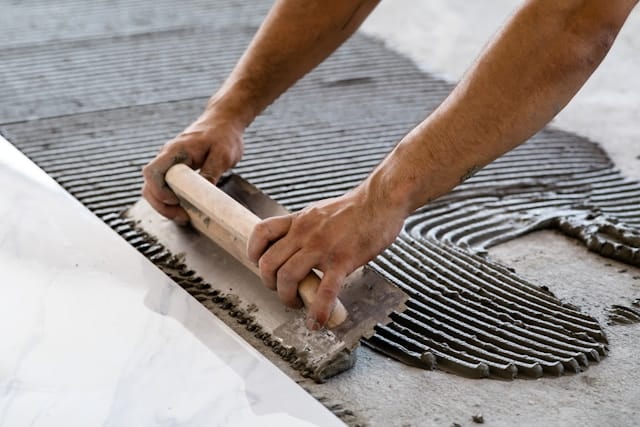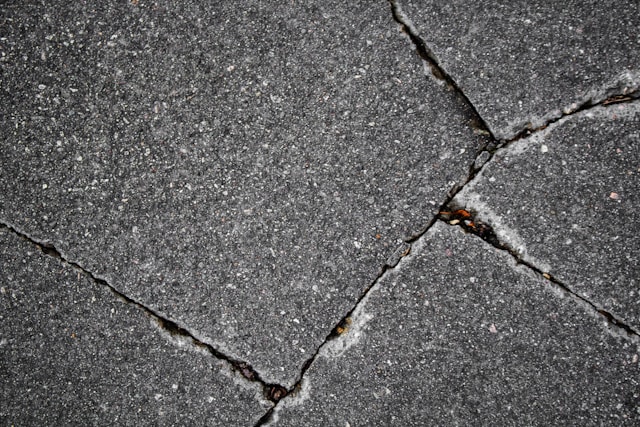Noticed damp spots on your walls or water gathering near your home’s base after heavy rain?
Those small signs often point to foundation leaks, and catching them early can save you from costly structural repairs later. When moisture finds its way into your foundation, it can slowly weaken concrete, cause cracks to expand, and even affect your indoor air quality.
Fixing foundation leaks isn’t just about stopping water; it’s about protecting the strength and stability of your entire home. By addressing leaks early, you prevent soil erosion, mold growth, and foundation settling, issues that only worsen over time if ignored.
At Helicon, we specialize in foundation leak repair designed for Florida’s unique soil and weather conditions. Our team has been serving homeowners since 2004, providing fast, long-lasting solutions that keep homes dry, secure, and worry-free. With advanced leak detection and proven repair methods, we make sure your foundation gets the care it needs.
In this blog, we will talk about:
- The most common causes and signs of foundation leaks
- Effective methods used to detect and repair them
- How our team at Helicon helps restore your foundation’s strength and peace of mind
Let’s explore what foundation leak repair really involves and how you can choose the right solution to protect your home.
What Is Foundation Leak Repair?
Foundation leak repair involves fixing cracks, gaps, or holes in your home’s foundation where water enters. If not addressed properly, these leaks can lead to damage. Understanding what causes the leaks and how water affects your foundation helps you take action to protect your home.
Definition and Overview
Foundation leak repair focuses on stopping water from getting into your foundation walls or floor. This usually means sealing cracks, installing drainage systems, or applying waterproof coatings.
Repair work can vary depending on how serious the leak is. Simple crack sealing is sometimes enough, but larger problems might require more detailed work, such as trenching or sump pump installation.
Common Causes of Foundation Leaks
Leaks often happen because of:
- Cracks in foundation walls or floors caused by shifting soil or temperature changes
- Poor drainage around your home, which lets water pool near the foundation
- Clogged or missing gutters that allow rainwater to overflow and soak the ground near your foundation
- High water tables or flooding that pushes water against your foundation walls
- Plumbing leaks inside the house that seep through the foundation
These factors cause water to collect and find weak spots in the foundation, leading to leaks. Knowing the cause helps you choose the right repair method.
How Water Affects Foundation Integrity
Water in your foundation can cause serious damage over time. It can erode the soil that supports your home, making the foundation shift or settle unevenly. When water stays trapped, it increases the chance of cracks growing larger or new ones forming.
Moisture also encourages mold and mildew, which can harm your air quality and damage building materials. Water pressure against foundation walls can cause bowing or bulging, threatening your home’s structural strength.
Signs You Need Foundation Leak Repair
You might notice water or moisture problems inside your home that could signal a foundation leak. Other warning signs include strange smells from mold and cracks in your walls or floors. Paying attention to these can help you catch issues early and avoid more serious damage.
Visible Water Damage
Water stains or damp spots on your basement walls or flooring are clear signs of foundation leaks. You might see puddles or persistent moisture near your foundation. Water pooling near your home’s exterior can also indicate drainage problems leading to leaks.
Look for discoloration, peeling paint, or warped wood near these damp areas. These signs show water has been present long enough to damage materials. If you spot any of these, you should act quickly to prevent mold and structural damage.
Unusual Odors and Mold Growth
Musty or damp smells inside your home often mean moisture is trapped somewhere. Mold tends to grow in areas with poor ventilation and ongoing leaks, especially in basements or crawlspaces.
Visible mold can appear as black, green, or white patches on walls, floors, or insulation. Breathing in mold spores can cause health problems, so addressing this is essential. If you smell something odd or see mold, foundation leak repair is likely needed.
Cracks in Walls or Floors
Cracks that appear suddenly or grow over time can signal foundation shifts caused by leaks. Pay close attention to stair-step cracks in drywall, gaps along baseboards, or cracks in concrete floors.
Small hairline cracks may not be urgent, but repeated or larger cracks show that your foundation might be weakening. Doors and windows that stick or don’t close properly often accompany this issue. A professional inspection can confirm if these cracks require repair.
Foundation Leak Repair Near Me: How to Choose a Specialist
When looking for a foundation leak repair expert, focus on clear, important details. Pay attention to local reputation, proper certifications, and how fast the company can respond. These points help ensure you get reliable and timely service that fits your needs.
Local Reputation and Reviews
Check what people near you say about the repair companies. Look for real, recent reviews that mention the quality of work and customer service. Positive reviews often show the company does a good job fixing foundation leaks.
You can use websites with customer feedback to compare specialists. See if neighbors recommend them or warn against them. A well-reviewed company in your area usually means faster, more trustworthy service.
Certifications and Licensing
Make sure the repair specialist has the right certifications and licenses. Certified contractors follow local building codes and use proven methods. This ensures that repairs meet safety and quality standards.
Ask the company to show its credentials before hiring. Licensed experts often carry insurance, protecting you from unexpected accidents during repairs. A certified and licensed specialist offers peace of mind for your foundation leak problem.
Response Time and Availability
Quick response matters in foundation leak repair. Water damage can worsen if left too long. Choose a company that offers prompt inspections and speedy repair schedules. Check if they provide emergency service or flexible appointment times. Early fixes reduce long-term damage and cost.
Types of Foundation Leak Repairs
When dealing with foundation leaks, several repair options can address water intrusion and protect your home’s structure. Each method targets different problem areas to stop leaks and dry your foundation. Understanding these options helps you choose the best repair for your needs.
Interior Sealants
Interior sealants involve applying waterproof coatings or epoxy inside your basement or crawl space. These sealants create a barrier that stops moisture from entering through small cracks or pores in the foundation walls.
This method is cost-effective and works well for minor leaks or dampness. However, it only addresses leaks from inside and may not fix water issues caused by outside drainage problems.
Exterior Waterproofing
Exterior waterproofing involves digging around the foundation to apply waterproof membranes or coatings directly to the outside walls. This method blocks water before it reaches the foundation, and it is more permanent and effective for high-pressure water and large leaks.
Exterior waterproofing often includes installing drainage mats or protective layers to ensure moisture moves away from your foundation. This option requires excavation but offers strong, lasting protection. It is usually recommended that your property’s drainage cannot be fixed by interior sealants alone.
French Drains
French drains are underground drainage systems installed near the foundation to redirect water away from your home. They consist of perforated pipes laid in gravel-filled trenches. These drains collect groundwater and lead it to a safe drainage area, preventing water buildup near your foundation walls.
French drains reduce hydrostatic pressure, which often causes leaks and cracks. This option works well for properties with poor soil drainage or heavy rainfall. When combined with other waterproofing measures, French drains offer a comprehensive solution to foundation leaks.
Foundation Leak Detection Methods
Detecting foundation leaks involves using methods that identify moisture and damage early. These techniques help you spot leaks before they cause serious problems. Common ways include looking for visible signs, measuring moisture levels, and using heat-sensing technology.
Visual Inspection
Visual inspection is the first step to finding signs of a foundation leak.
- Look for cracks in walls or floors, damp spots, or peeling paint.
- You might also notice musty odors or mold growth near the foundation.
- Check gutters and downspouts for water overflow, which can direct water toward your foundation.
- Look for soil erosion or pooling water around the house exterior.
These signs suggest water is collecting too close to your home and may be leaking into the foundation. Visual inspections are simple but essential. If you see any problems, a more detailed investigation may be needed to confirm a leak.
Moisture Meter Usage
A moisture meter measures water content in materials like concrete or wood. It provides clear, numerical data to find damp areas you can’t see. You hold the meter against surfaces near your foundation to check moisture levels.
High moisture readings usually point to leaks or water damage. Moisture meters help you track hidden wet spots inside walls or floors under the slab. This tool is especially useful in humid climates, where dampness easily builds up. Using a meter gives you objective proof of moisture issues before they worsen.
Infrared Thermography
Infrared thermography detects temperature differences on your foundation’s surface. It uses a special camera to spot cooler, damp areas hidden behind walls or concrete slabs. Water leaks cause temperature shifts because wet areas lose heat differently than dry ones.
Thermography lets you “see” these changes without breaking walls or floors, making it a non-invasive method. This technology is ideal for detecting leaks early. It can identify moisture even under thick materials or deep inside structures.
Combining thermography with visual and moisture tests ensures a complete foundation leak detection.
Cost Factors for Foundation Leak Repair
The price to fix foundation leaks depends on several important details. The extent of the damage, the materials and methods used for repairs, and local labor rates all shape the final cost. Understanding these factors helps you plan and avoid surprises during the repair process.
Extent of Damage
The amount of damage to your foundation determines much of the repair cost. Small cracks or minor leaks are less expensive to fix, often costing between $250 and $800. However, if leaks have caused water damage inside walls or floors, or if the foundation has shifted, costs can jump significantly.
More severe damage means more labor and materials. Depending on the depth of the leaks and the amount of foundation that needs sealing or stabilization, repairs may cost $2,000 to $12,000. Early inspection and repair keep expenses lower and protect your home’s structure.
Repair Materials and Methods
The method and materials used to fix foundation leaks affect the overall price.
Common approaches include epoxy injections for cracks and waterproof sealants applied outside the foundation walls. Each method varies in cost and durability. Epoxy injections work well for small cracks and cost less, while exterior waterproofing requires excavation and drainage installation, which can be more expensive.
Choosing the right repair depends on your home’s condition and local soil. Using quality materials adds upfront cost but prevents leaks from returning, saving you money in the long run.
Labor Rates in Your Area
Labor costs can change depending on where you live. Areas with higher living costs or less competition among contractors may have higher hourly rates. This affects the total price of foundation leak repair.
In Florida, where Helicon operates, experienced crews charge competitive rates due to the volume of foundation work needed. Hiring skilled professionals ensures the job is done correctly and safely.
Cheap labor might cost more if the problem isn’t fully fixed. Before you commit, request detailed estimates from trusted companies. Transparency about labor and materials helps you compare offers and make confident decisions.
Benefits of Timely Foundation Leak Repair
Fixing foundation leaks quickly can protect your home’s structure, increase its value, and improve the air quality inside. Addressing leaks early helps avoid costly repairs and health risks from moisture buildup.
Preventing Structural Damage
If ignored, water leaks in your foundation can cause serious damage. Moisture weakens concrete, wood, and steel supports, leading to cracks, sinking, or uneven floors. Timely repair stops water from seeping into vulnerable areas, protecting the foundation from deterioration and keeping your home stable. It also prevents problems like basement flooding, which can cause additional issues like mold and rot.
Improving Home Value
A foundation with leaks or visible damage can lower your home’s market value. Potential buyers may see these issues as expensive future repairs and might avoid your property altogether. Prompt leak repair shows that you maintain your home well. This increases buyer confidence and can lead to higher offers if you decide to sell.
Repairing leaks can improve curb appeal and the overall condition of your home. Using trusted services, such as Helicon’s, guarantees professional results that buyers will appreciate during inspections and appraisals.
Enhancing Indoor Air Quality
Foundation leaks often lead to moisture buildup inside basements or crawl spaces. This damp environment encourages mold and mildew growth, which releases spores harmful to breathe. Poor air quality from mold can cause allergies, respiratory problems, and other health issues for you and your family.
Repairing leaks stops moisture entry and reduces the chance of mold developing. Proper repair also helps control humidity levels, creating a healthier living space. Maintaining a dry foundation supports better indoor air quality and overall comfort.
Maintenance Tips After Foundation Leak Repair
Proper care after foundation leak repair helps keep your home stable and prevents future problems. Focus on regular checks, managing water flow around your home, and watching for any new signs of leaks or damage.
Regular Foundation Inspections
Check your foundation at least twice yearly, ideally in spring and fall. Look for new cracks, moisture spots, or shifts in the walls and floors. Pay attention to areas that were previously repaired, as these may be more vulnerable. Use a flashlight to inspect basements or crawl spaces for dampness or mold.
Document any changes you notice so you can share them with a professional if you need repairs later. Regular inspections let you catch problems early before they worsen. If you are unsure how to spot issues, a trusted company like Helicon can conduct thorough inspections. Our experts know what signs to watch for and can guide you on when to take action.
Proper Landscaping and Drainage
Water is the leading cause of foundation leaks, so managing runoff is critical. Ensure your yard slopes away from the foundation, with at least a 6-inch drop over 10 feet. This helps keep water moving away from your home. Keep gutters and downspouts clean and in good condition.
Extend downspouts at least 5 feet away from the foundation. Use splash blocks or underground drains if needed to direct water away efficiently. Avoid planting large trees or heavy shrubs too close to your foundation. Roots can cause soil movement and disrupt your foundation’s stability.
Instead, choose shallow-root plants and maintain at least 3 feet of clear space around the foundation.
Monitoring for Recurrence
After repairs, watch your foundation closely for any return of leaks or cracking. Check during and after heavy rains, as water pressure mostly affects the foundation then. Be alert for signs like musty odors, peeling paint, or uneven floors, which may indicate water is getting back in.
Early detection is key to preventing bigger damage. Keep a log of changes you see over time and take photos if possible. If you spot new issues, contact a trusted foundation specialist immediately.
Comparing Foundation Leak Repair Methods
When water starts seeping through your foundation, not every repair method offers the same level of protection. Choosing the right approach depends on how severe the leak is, where it’s located, and how much pressure your foundation is under. Understanding how each method works helps you make informed decisions that protect your home for the long term.
Here’s a quick comparison of the most common foundation leak repair methods used by professionals in Florida:
| Repair Method | Best For | How It Works | Durability | Cost Range | Used by Helicon? |
| Interior Sealants (Epoxy/Coatings) | Minor surface cracks or damp spots | Applied inside to seal small gaps and prevent moisture entry | Moderate – Ideal for temporary fixes | Low | ✅ Used selectively for small interior leaks |
| Exterior Waterproofing Membranes | Severe water pressure or recurring leaks | Waterproof layers applied outside the foundation to block water | High – Long-term barrier | High | ✅ Yes, for heavy leaks or hydrostatic pressure |
| French Drain Systems | Groundwater accumulation and poor yard drainage | Perforated pipes redirect water away from foundation | High – Prevents future pressure buildup | Moderate to High | ✅ Yes, combined with waterproofing systems |
| Sump Pump Installation | Frequent flooding or high water table | Pumps out water collected in a basin to the exterior | High – Reliable for active drainage | Moderate | ✅ Yes, depending on site needs |
| Soil Stabilization & Grouting | Foundation movement or soil erosion | Strengthens soil beneath slab to prevent water infiltration | Very High – Long-term stability | Moderate | ✅ Yes, one of Helicon’s core specialties |
This comparison highlights why Helicon combines multiple techniques to create durable, long-term solutions rather than temporary patchwork. By evaluating your soil, drainage, and foundation condition during a free inspection, our experts recommend the best combination of repairs for your specific needs.
Wrapping It Up
Foundation leaks can start small but quickly turn into major problems if ignored. Protecting your home means addressing moisture issues before they affect its structure or value. The right repair method doesn’t just stop water; it restores strength and stability to your foundation.
At Helicon, we understand how Florida’s soil and weather conditions can challenge your home, which is why our team uses proven techniques like waterproofing, drainage installation, and soil stabilization to deliver long-lasting results. With more than 20 years of trusted experience, we’re committed to keeping your home safe and dry.
Don’t wait until minor dampness becomes structural damage. Schedule your free inspection with Helicon today and take the first step toward a stronger, leak-free foundation.
Frequently Asked Questions
Foundation leaks can cause a lot of stress for homeowners, especially when the signs aren’t always obvious. A few small clues, like musty odors or hairline cracks, can mean much more than simple surface issues. Here are some common questions people often ask about foundation leak repair and what you should know before calling an expert.
What’s the difference between a surface crack and a foundation leak?
Surface cracks are often cosmetic and stay dry, while foundation leaks usually show dampness or discoloration around the crack. If you notice water seeping through or musty smells nearby, it’s likely a leak that needs professional repair.
How long does foundation leak repair typically take?
Minor leaks may take a few hours to seal, while complex issues needing exterior waterproofing or drainage installation can take several days. Timely inspection helps plan repairs efficiently and minimize disruption to your home.
Can I repair a foundation leak myself?
Small cracks can sometimes be patched using DIY kits, but without proper sealing or identifying the leak’s source, water may return. Hiring professionals ensures durable repairs, correct materials, and protection against recurring water damage.
What’s the best way to prevent future foundation leaks?
Good drainage is key. Keep gutters clean, slope soil away from your foundation, and seal any small cracks promptly. Regular inspections help detect early moisture problems before they lead to major foundation damage.
Does homeowner’s insurance cover foundation leak repair?
In most cases, insurance won’t cover leaks caused by poor maintenance or natural settling. However, if leaks result from sudden events like burst pipes, some policies may apply. Always review your policy or consult your agent.
Why is Helicon a trusted choice for foundation leak repair?
Helicon has served Florida homeowners for over 20 years, offering expert leak detection, waterproofing, and soil stabilization. Our team provides free inspections and customized repair plans that ensure long-term protection and peace of mind.





